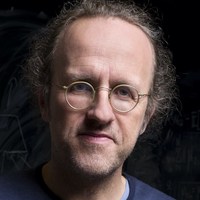Space-Variant Single-Image Blind Deconvolution for Removing Camera Shake
Modelling camera shake as a space-invariant convolution simplifies the problem of removing camera shake, but often insufficiently models actual motion blur such as those due to camera rotation and movements outside the sensor plane or when objects in the scene have different distances to the camera. In an effort to address these limitations, (i) we introduce a taxonomy of camera shakes, (ii) we build on a recently introduced framework for space-variant filtering by Hirsch et al. and a fast algorithm for single image blind deconvolution for space-invariant filters by Cho and Lee to construct a method for blind deconvolution in the case of space-variant blur, and (iii), we present an experimental setup for evaluation that allows us to take images with real camera shake while at the same time recording the spacevariant point spread function corresponding to that blur. Finally, we demonstrate that our method is able to deblur images degraded by spatially-varying blur originating from real camera shake, even without using additionally motion sensor information.
| Author(s): | Harmeling, S. and Hirsch, M. and Schölkopf, B. |
| Book Title: | Advances in Neural Information Processing Systems 23 |
| Journal: | Advances in Neural Information Processing Systems 23: 24th Annual Conference on Neural Information Processing Systems 2010 |
| Pages: | 829-837 |
| Year: | 2010 |
| Day: | 0 |
| Editors: | J Lafferty and CKI Williams and J Shawe-Taylor and RS Zemel and A Culotta |
| Publisher: | Curran |
| Bibtex Type: | Conference Paper (inproceedings) |
| Address: | Red Hook, NY, USA |
| Event Name: | 24th Annual Conference on Neural Information Processing Systems (NIPS 2010) |
| Event Place: | Vancouver, BC, Canada |
| Digital: | 0 |
| Electronic Archiving: | grant_archive |
| ISBN: | 978-1-617-82380-0 |
| Language: | en |
| Organization: | Max-Planck-Gesellschaft |
| School: | Biologische Kybernetik |
| Links: | |
BibTex
@inproceedings{6769,
title = {Space-Variant Single-Image Blind Deconvolution for Removing Camera Shake},
journal = {Advances in Neural Information Processing Systems 23: 24th Annual Conference on Neural Information Processing Systems 2010},
booktitle = {Advances in Neural Information Processing Systems 23},
abstract = {Modelling camera shake as a space-invariant convolution simplifies the problem of removing camera shake, but often insufficiently models actual motion blur such
as those due to camera rotation and movements outside the sensor plane or when objects in the scene have different distances to the camera. In an effort to address
these limitations, (i) we introduce a taxonomy of camera shakes, (ii) we build on a recently introduced framework for space-variant filtering by Hirsch et al. and a fast
algorithm for single image blind deconvolution for space-invariant filters by Cho and Lee to construct a method for blind deconvolution in the case of space-variant
blur, and (iii), we present an experimental setup for evaluation that allows us to take images with real camera shake while at the same time recording the spacevariant
point spread function corresponding to that blur. Finally, we demonstrate that our method is able to deblur images degraded by spatially-varying blur originating
from real camera shake, even without using additionally motion sensor information.},
pages = {829-837},
editors = {J Lafferty and CKI Williams and J Shawe-Taylor and RS Zemel and A Culotta},
publisher = {Curran},
organization = {Max-Planck-Gesellschaft},
school = {Biologische Kybernetik},
address = {Red Hook, NY, USA},
year = {2010},
slug = {6769},
author = {Harmeling, S. and Hirsch, M. and Sch{\"o}lkopf, B.}
}


